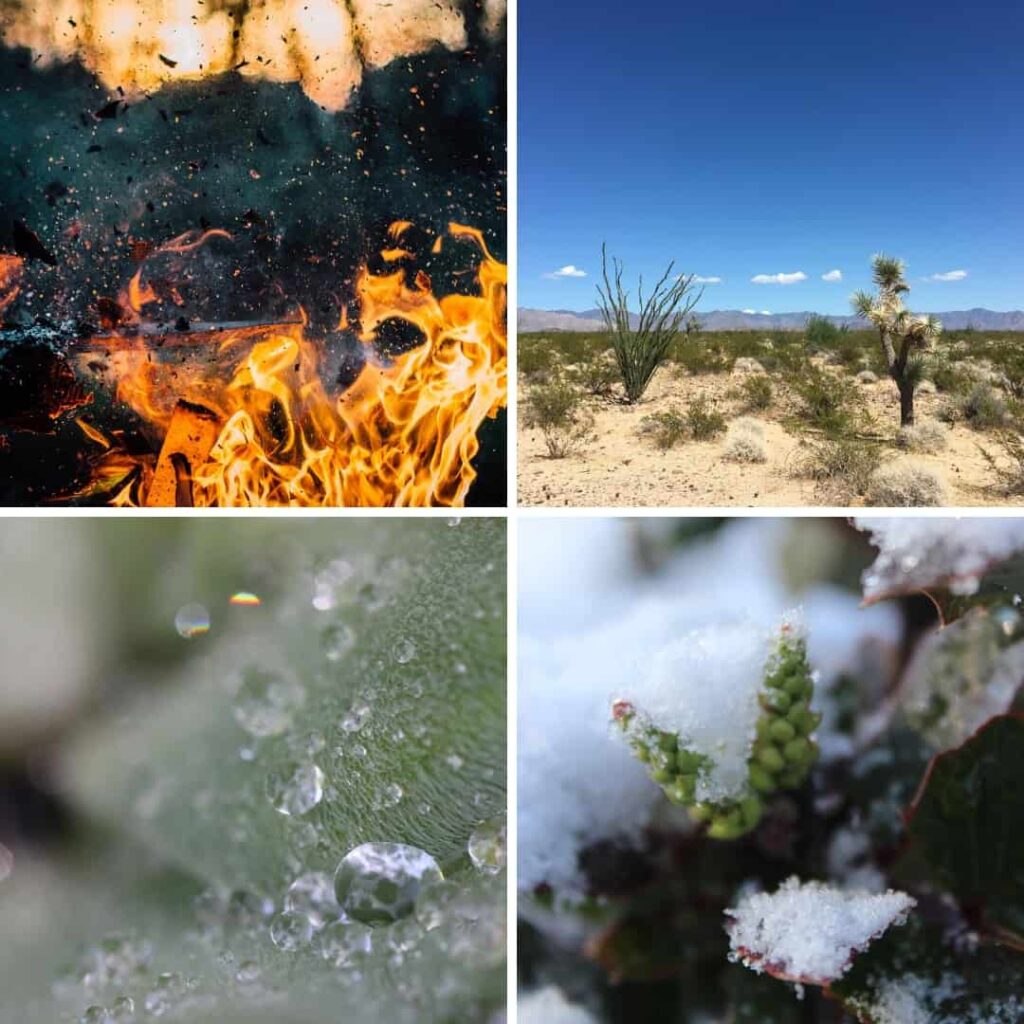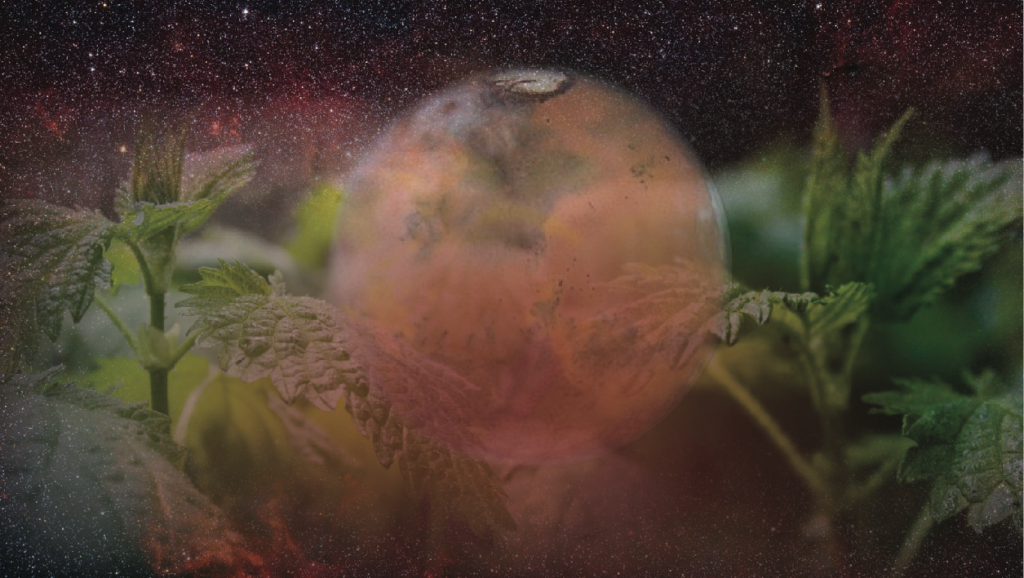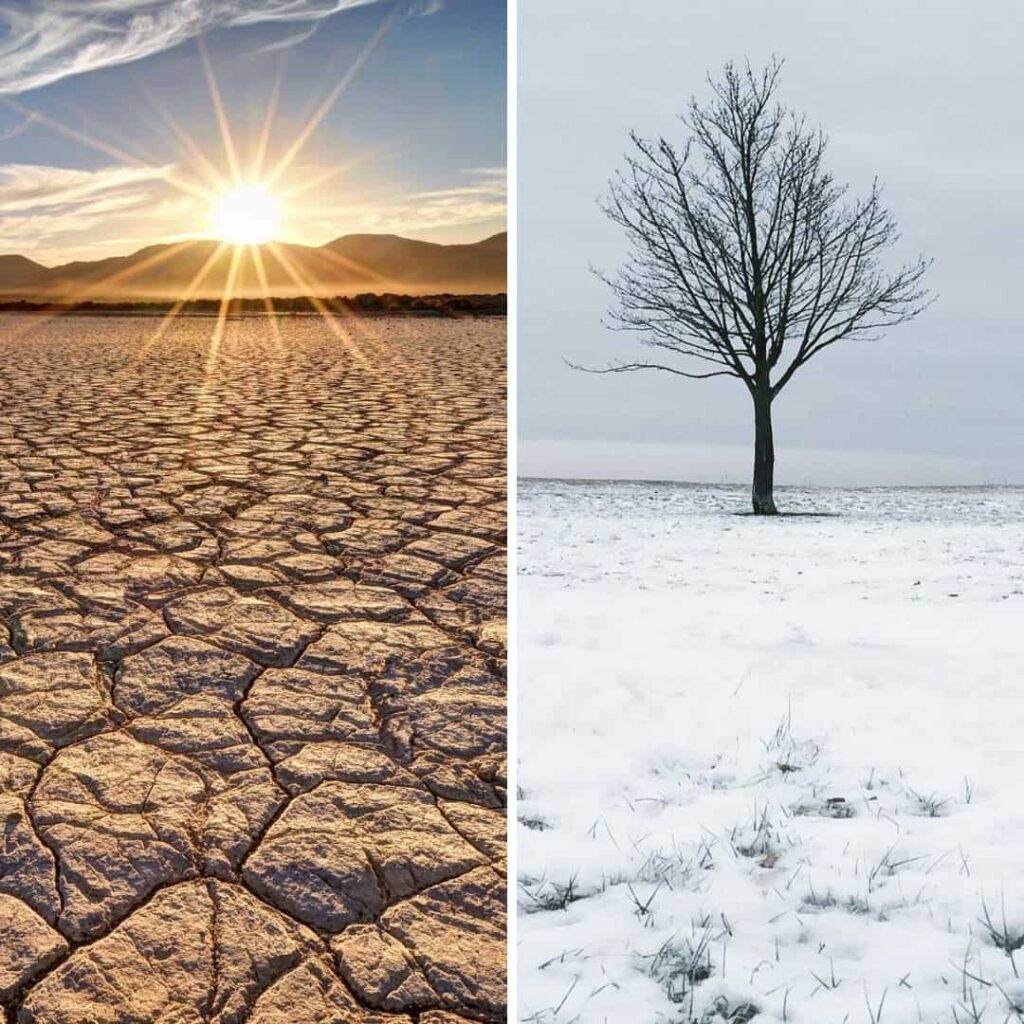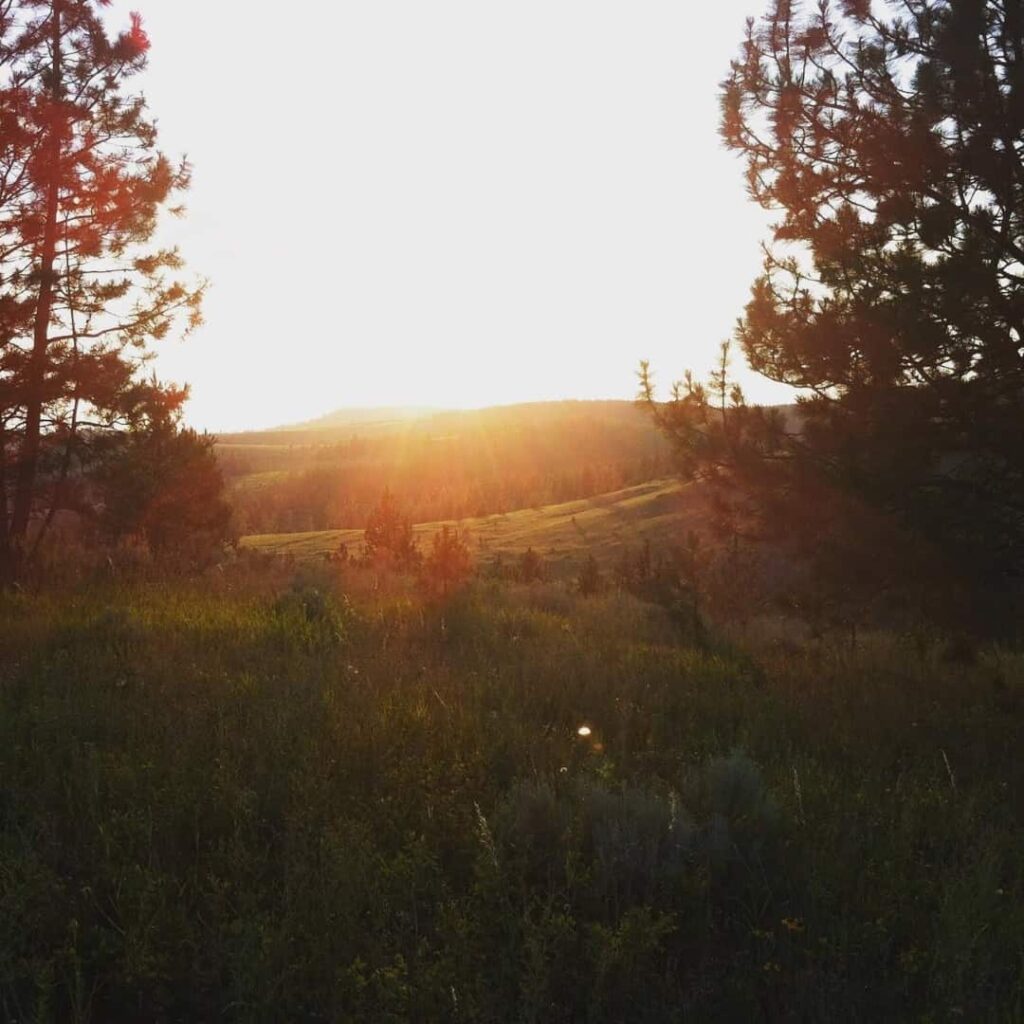Table of Contents
This week, I answered a question from a student regarding some of the differentials between hot and cold. One of the primary elements of understanding the energetics or constitution of a person is temperature—whether someone runs really hot or runs really cold. Sometimes it can be a little confusing in terms of how you actually assess that. What are the core determining factors that you’re looking at in a person to be able to tell whether they’re hot or cold, either constitutionally or in their current symptomatic picture? This week we’re going to cover this dynamic that’s important to understand with every person that you work with.
The Importance of Understanding Temperature
Temperature is an important factor to consider whenever we’re working with the energetics of a person, their tissue states, and so on, because it allows you to get more specific with your remedy selection so you’re not choosing herbs based on the condition or the symptom, but you’re able to get more specific into the ecological state of the tissues that is then giving rise to that symptom or that condition. Temperature is really, really important.
So let’s look at cold and hot orientation. We’ll talk about constitutional dynamics and then dig into more detail on the main patterns or signs and symptoms to look for, as well as some examples of specific kinds of symptoms that you might see there.
Energetics is how nature functions. Everything in nature is based on energetics. It’s very intuitive. These are things that we experience every single day. It’s similar to how and why people talk about the weather so much. When people don’t really know what to say, they say, “Oh, it’s pretty hot today,” or, “It’s really cold today,” or, “Sure is dry out there,” or, “It’s still raining.” That’s similar to the way we talk about hot, cold, wet, and dry.

I like to encourage my students to remember to pay attention to nature and come to an understanding of these energetic patterns, not just through what you read in the books but also through paying attention to the seasons, to the weather, to different ecosystems, and then paying attention to how those different states of nature change your internal state. How do you feel when you’re in Phoenix, Arizona, and it’s 110 degrees outside? How do you feel when it’s January and you’re in the Far North and it’s really cold? Pay attention to what goes on in your body and also in your mind, because that’s all the language of energetics.
What Are Characteristics of Heat?
In the Ayurvedic orientation, people who are prone to heat are considered the Pitta dosha. This dosha is associated with both the fire and water elements. People often focus on the fire aspect of Pitta but forget the water element with this constitution, specifically in the form of oils. Pitta tends to get very oily in their expression. Pitta people tend to be a medium build. The muscles tend to be the more predominant tissue type that you see, whereas Kapha tends to be more adipose tissue, and Vata tends to be more connective tissue. So Pitta tends to be a more medium build, muscular, fiery, driven, extroverted, strong personality.

From a medical astrology perspective, the sun and Mars tend to be the most heat-generating. A good way to see the difference between the two is that the sun generally is warm, whereas Mars is hot. Mars tends to be more pathological heat, whereas the sun generally isn’t creating heat to the point of creating physical problems in the body. That usually is under the dominion of Mars.
The fire signs of the Zodiac—Aries, Leo, and Sagittarius—tend to be more prone to heat patterns. That doesn’t mean that if your sun sign is Aries, Leo, or Sagittarius that you’re going to be innately a hot person. Medical astrology is far beyond just what your sun sign is. It’s important to remember that. When students are learning about medical astrology and constitutional, they sometimes say “Well, I’m a this sign and I don’t have any of those problems,” or “I don’t look like that.” It’s much more involved than just what the sun sign is, but those are some of the indicators of heat in medical astrology. For the physiomedicalist, the heat excitation tissue state is the main tissue state attributed to heat, or an excess of yang in Chinese medicine.
Indicators of Heat
So how do you tell heat? Generally speaking, the signs and symptoms are red, flushed skin, irritations, and inflammations. These are all heat signs. Another sign is sharp, penetrating, stinging, irritable type of pain. Heat tends to be hypersensitive. One of the factors of the excitation tissue state is that the tissues become hypersensitive and hyperreactive. They tend to be easily aggravated or easily inflamed—they’re very sensitive. A good example of that is when people have a lot of heat in the respiratory system and they go to take a breath and it hurts to take a deep breath, or they take a deep breath and it irritates the respiratory tissue and then they start coughing. Or, in the case of a urinary tract infection, when they go to urinate, there’s going to be a lot of hot, sharp, burning pain upon urination. These are very clear indicators of heat.
Another clear indicator of heat is a common symptom: acid reflux, where you get this rising, hot, burning pain in the stomach. A key factor to consider with heat patterns is to look at nature. For example, consider fire. In nature, a fire radiates heat up and out. The smoke rises, everything is radiating and moving upward and outward. We often see that with people, that their energy tends to move up and out. Emotionally, they might have that anger, irritability, or frustration, those qualities that explode outward. Excessive sweating is also a heat pattern.

There are also simple dynamics like symptoms that are aggravated by hot, spicy foods or hot drinks like hot coffee or hot tea, as well as an aversion to hot weather. People who go outside and say, “Oh, I can’t be in this heat”—it makes them agitated or frustrated. These people tend to be prone to heat patterns. If symptoms are provoked by heat, either temperature heat or heat from spicy foods and herbs, that’s an indication of heat. Another clear indication is if symptoms are palliated by cold, like when pain feels better with ice, whereas if you put a hot pack on it, that makes it worse.
Another factor is whether the symptom gets better or worse with movement. When you’re working with someone who has physical pain, this is a good way of deciphering what type of pain it is in terms of hot, cold, wet, and dry. Is it better or worse with movement? Pain that tends to be aggravated by movement—which usually is, “I wake up in the morning, I feel pretty good. And then as I’m going about my day and I’m moving around and I’m doing things, the pain gradually increases”—is usually an indication that there’s more heat and agitation present in the tissues, and it becomes better with stillness and rest.
Conversely, sometimes people have pain that’s worse in the morning. They wake up and they’re stiff and sore and everything aches. Then they start moving around. The blood starts flowing, their joints are moving. That movement generates heat. As they move, the pain subsides. Generally speaking, that’s more of a cold type of pain. So that’s another helpful differential.
Another factor for heat is the tongue. For heat, the body of the tongue will have a red color, and generally speaking, the deeper and darker the red, the deeper the heat has penetrated into the tissues. A light pink to carmine color of the tongue is considered a healthy tongue. So we’re looking for a darker red coloration to the tongue. Sometimes you’ll see what I call strawberry spots. These are often on the tip of the tongue—those little red dots on the tongue, which remind me of the dots on a strawberry. That’s a good indication for heat. Another indication of heat is a coating on the tongue, usually with a yellowish coloration. Make sure someone hasn’t drank a big cup of coffee right before you look at their tongue, because that will discolor the tongue. Another general pattern that we see for Pitta constitutions is what Matthew Wood refers to as the flame-shaped tongue. This is a tongue that comes to a sharp tip. It’s not really broad and wide or thick. It’s more sharp in shape and contour. Often, if there’s heat with dryness, you’ll see cracking on the tongue and then redness within those cracks. Whether the dryness is caused by the heat or the heat is caused by the dryness is different from case to case, but that’s another thing that you can look for on the tongue.
You can also see heat signs in the pulse. Heat often works through the blood. From a traditional perspective, we see that the heart and the cardiovascular system is governed by the fire element. It’s under the dominion of the Leo sign of the Zodiac. Leo rules the heart and the circulatory system as a whole, along with the sun. And so when there’s a lot of heat, we see it manifested in how the blood’s moving. We often see movement of the blood and an elevated heart rate.
A fever is a picture-perfect example of what heat patterns look like in a person. They’re sweating, they get red skin, and they have an aversion to warm things. Their pulse is rapid, and it’s also pushing to the surface. You usually don’t have to dig around to find a hot pulse. It should be very close to the surface and pretty easy to find, and often it’s pretty rapid. That’s known as a superficial pulse. The blood is pushing out to the surface, the heat is driving out to the surface and trying to open the pores of the skin to relieve that internal heat through sweating.
What Are Characteristics of Cold?
We’ve looked at the dynamics that can help us decipher the heat pattern in a person. Cold is basically the 180-degree opposite of what we just covered, because these are oppositions. In Ayurveda, two constitutions have cold in common. Kapha tends to be cold, but Kapha is more thick, heavy, damp, and cold, whereas Vata tends to be cold, but with dryness and lightness. Kapha tends to be stuck in stagnant dampness, coupled with cold, whereas Vata tends to be tense and constricted and not working through fluids like Kapha but moving through the nerves. So both of these constitutions can be cold.
One constitutional universal with cold is paleness on the skin. A common complaint with cold patterns is cold hands and feet as well as paleness of the skin. One way to see and decipher a difference in cold with cold extremities is to feel down the arm of a person. If it gradually gets cooler as you go down the arm and you get to the tips of the fingers and they’re cold, that indicates a lack of heat in the core. There is a fire, the alchemical furnace in our gut that is radiating heat out to the periphery. If that fire is diminished, it’s gradually going to get colder the further away you get from it, just like a fire. When you stand close to the fire, it’s hot, but the further you get away from it, the cooler it gets.

Another dynamic with cold hands and feet is if you’re feeling down the arm and it’s consistently warm and then all of a sudden it’s cold. It’s all the same temperature but then there’s a sudden, sharp transition to cold, which usually indicates constriction or tension—constriction in the neuromuscular junction of the blood vessels that’s constricting the blood flow at a very particular point. Think of watering a garden. The water is flowing through the hose, and everything is flowing well. But then there’s a kink. The water flows all the way up to the kink just fine, but after the kink it doesn’t. That’s similar to the pattern of cold hands and feet. It’s not necessarily that there’s a lack of heat. It’s more that there’s a kink in the hose that is preventing the heat from reaching all the way out to the periphery.
So these are big-picture patterns of cold from the physiomedicalist perspective. This is called the cold depression tissue state, which is opposite of heat excitation. With excitation, the tissues are overstimulated and oversensitive. There’s too much activity going on. Cold depression is the opposite. It’s a lack of stimulation. The tissue is depressed in its functioning.
The Effects of Hot and Cold
These are psychological terms, like being excited or being depressed. But think of a little child on their birthday or Christmas morning, and they’re so excited and there’s so much energy and they are running around and they’re over here and they’re over there and they’re all over with all this energy. But then think of how you feel when you’re depressed: “Oh, everything is awful and terrible. And I can’t get out of bed, and I don’t want to do anything.” Well, think of what happens if your large intestines says, “I don’t want to do anything.” Or your liver is like, “Eh, I don’t really feel like doing my job today.” It’s not good. This is a lack of stimulation. When an organ or tissue becomes depressed or cold, that is hypofunctioning, it’s lowered in its metabolism, it’s lowered in fulfilling its physiological role.
We tend to think of hot and cold in terms of degrees on a thermometer, but that’s a very linear way of thinking about it. A better way to think about the effects of hot and cold on the human organism is to look at what cold and heat do to us. Heat expands and radiates, while cold contracts. Think of how you feel when you’re cold. You huddle in on yourself. Everything closes in, because you’re trying to preserve body heat. Cold contracts in, and it pulls the vital force down and in.
Blood flow is really important here. With heat, we have too much blood, too much fullness. With cold, it’s a lack of blood, a lack of circulation, which is why we see pale skin and cold hands and feet. Cold digestion is a really common pattern that we see these days—cold depression in the digestive system. The digestive organs are not fulfilling their physiological function. So we see a lack of stimulation, a lack of secretion. Maybe the gallbladder isn’t secreting bile as effectively, maybe the liver isn’t producing enough bile, maybe peristalsis is not—those muscular contractions aren’t occurring as efficiently and effectively as they could be. We see things like constipation, which could be associated with cold digestion. That’s one straightforward, simple example of how the cold depression tissue state can manifest within the body.

The best way to differentiate heat from cold is just looking at general signs and symptoms. With cold, we’re also going to see a preference for hot food and hot drinks. We’re going to see an aversion to icy, cold, frozen type foods. They can be oftentimes aggravating. We can see signs of cold on the tongue. We’ll see a pale tongue or a coating on the tongue with a white coloration. It is common, especially if there’s dampness present, for there to be a thick white coat on the tongue that indicates cold, usually coupled with dampness. Pale tongue, wide tongue, sometimes thicker—it’s really that paleness and that white coloration that is an indicator for cold.
This is opposite to the heat excitation tissue state in the pulse. The cold pulse is going to be deeper. It’s going to be lower. It’s going to be hidden and more difficult to find, whereas hot is pushing up against your finger and hammering up against it. The cold pulse, because the circulation is pooled in and everything’s down and in, it might be deeper, it might be more difficult to find, and it’s typically going to be a little slower and a little more languid. So instead of the rapid beat of heat, it’s going to be a little more steady, a little more rounded, not quite so sharp in terms of its feeling against the finger. These are some general things to consider with the cold pulse. Of course there are other dynamics around the pulse, but that’s the most simple way to explain it, to be aware of these things.
Study Nature and Trust Your Intuition
So those are some differentials to consider when you’re looking at hot versus cold. This should be intuitive. People tend to overthink this and get intellectual about it. While it’s good to have an understanding of some of the signs and symptoms, we all know what heat feels like. We all know what cold feels like. We all know what it feels like to be excited. Most people have experienced a little bit of depression or melancholy from time to time.

Pay attention to nature, because that is one of the most important ways to understand energetics. The human body is an ecosystem. It is a mirror of the natural world. A good herbalist is first and foremost and forever a student of nature. The more that you can understand the patterns of hot and cold in nature, the more you’ll be able to recognize it within a human body.







